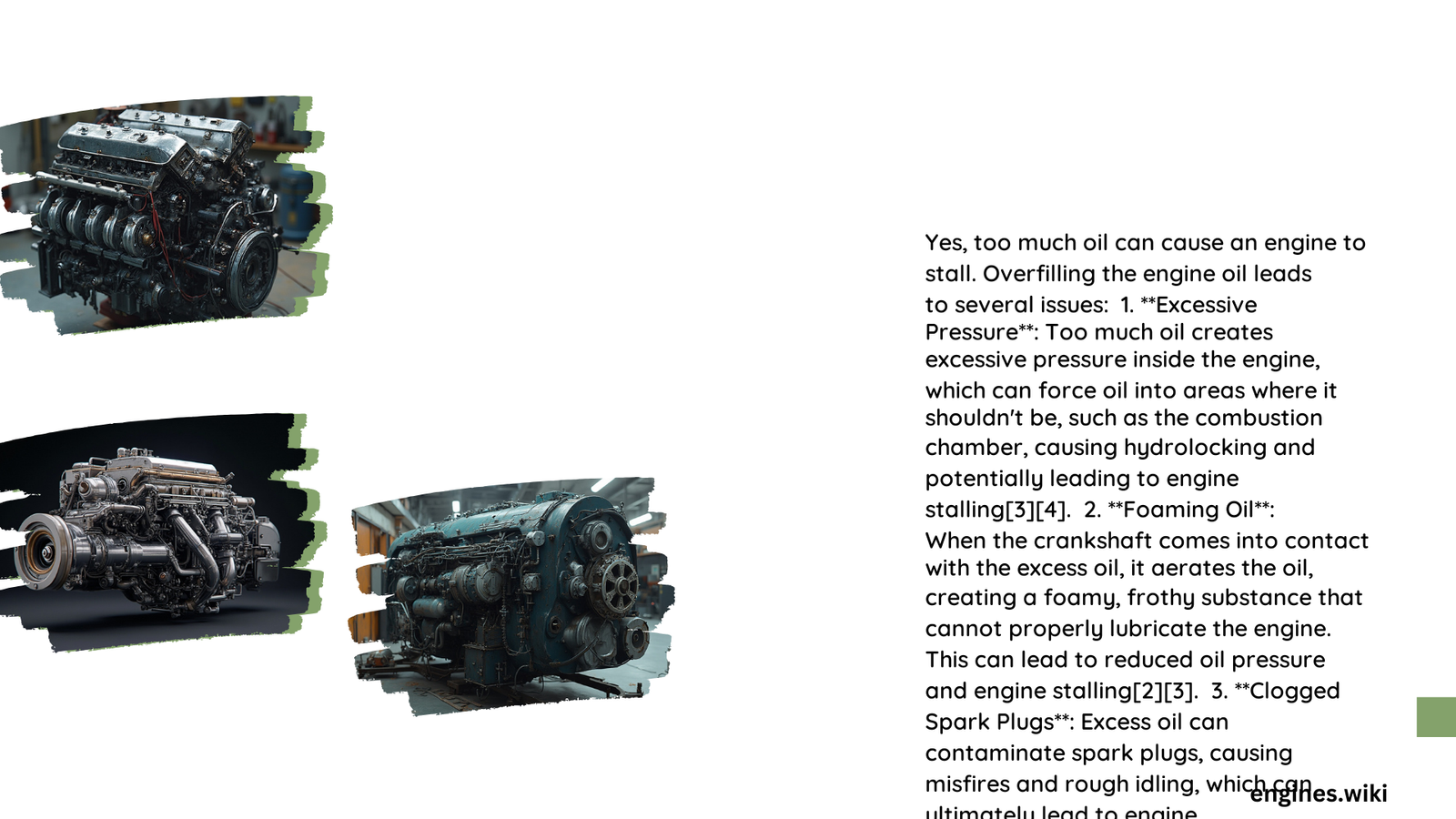Engine oil is the lifeblood of your vehicle, but too much of it can create a catastrophic scenario that leads to engine stalling. When oil levels exceed the recommended capacity, it transforms from a lubricating solution into a potential mechanical nightmare, causing complex interactions within the engine’s intricate systems that can ultimately result in complete engine failure and unexpected stalling.
What Happens When Engine Oil is Overfilled?
Overfilling engine oil creates a cascade of mechanical complications that can compromise your vehicle’s performance. The excess oil interferes with critical engine components, leading to several potential issues:
How Does Excess Oil Cause Engine Stalling?
When oil levels surpass the recommended capacity, several mechanical disruptions occur:
- Crankshaft Aeration
- Excess oil gets whipped into a frothy mixture
- Crankshaft agitates oil, creating foam-like consistency
-
Reduces effective lubrication capabilities
-
Oil Pressure Complications
- Initial high oil pressure readings
- Sudden pressure drops due to aerated oil
- Oil pump struggles to circulate foamy oil
What Are the Specific Symptoms of Oil-Induced Stalling?
| Symptom | Potential Cause | Severity |
|---|---|---|
| White/Blue Exhaust Smoke | Oil entering combustion chamber | High |
| Rough Idling | Spark plug contamination | Medium |
| Poor Acceleration | Oil-soaked spark plugs | High |
| Engine Misfire | Compromised combustion process | Critical |
Can Overfilled Oil Damage Engine Components?
Excessive oil can cause significant damage:
– Potential hydrolocking
– Bearing wear
– Risk of bent connecting rods
– Compromised spark plug functionality
– Potential catalytic converter damage
How Much Oil Overfill Triggers Stalling?
Critical thresholds for oil overfill include:
– 1 liter above recommended level: Initial performance issues
– 3 quarts above recommended level: High risk of severe engine damage
– Consistent overfill: Guaranteed mechanical complications
What Are Immediate Steps to Address Overfilled Oil?
- Stop driving immediately
- Check oil level using dipstick
- Drain excess oil to recommended level
- Inspect spark plugs
- Consider professional diagnostic check
How to Prevent Oil Overfill?
- Use precise measuring techniques
- Follow manufacturer’s recommended oil capacity
- Regular professional maintenance
- Learn proper oil change procedures
- Invest in quality oil change tools
Cost Implications of Oil Overfill
Potential repair costs range:
– Minor repairs: $50 – $200
– Major engine repairs: $1,500 – $4,000
– Complete engine replacement: $4,000 – $8,000
Expert Recommendations

Professional mechanics unanimously agree that prevention is more cost-effective than repair. Regular maintenance, precise oil level monitoring, and understanding your vehicle’s specific requirements can prevent costly engine stalling scenarios.
Technical Insights
The interaction between crankshaft rotation and excessive oil creates a phenomenon called “oil aeration” – transforming liquid oil into a foam-like substance that dramatically reduces lubrication efficiency.
Conclusion
Understanding the delicate balance of engine oil is crucial for maintaining vehicle performance. While oil is essential, too much can be just as detrimental as too little.
